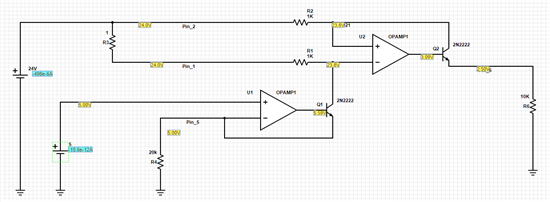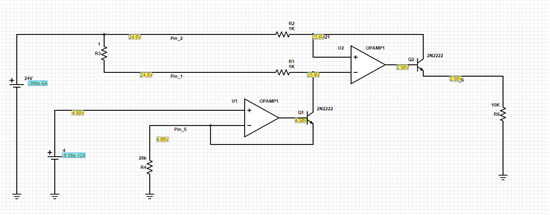Hi
I've got a problem with my INA170 design.
Purpose: I want to measure a current of max +/- 100mA.
I chose the parts with the following values:
Rs = 1R
RL = 10k
Ros = 20k
Vref = 5V
V+ = 5V
With my calculation (equation (4) of the datasheet) Vout should be:
I = -100mA -> Vout = 1.5V
I = -50mA -> Vout = 2V
I = 0mA -> Vout = 2.5 V
I = +50mA -> Vout = 3V
I = +100mA -> Vout = 3.5V
Unfortunately in the reality I measure other values:
I = -47mA -> Vout = 1.52V
I = 0mA -> Vout = 0.124V
I = +47mA = Vout = 0.00V
I was doing the measurments with three differents INA170. With all I had the same result.
Can anybody help me and tell me what I'm doing wrong?
Thanks



